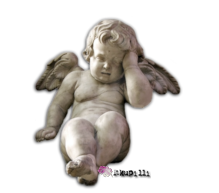First, let’s look at what constitutes a “haunting.” To us, there are two main categories for ghost / spirit hauntings…
Residual Hauntings
A residual haunting, by far the most common type of haunting, is a haunting in which the ghostly energy goes through a cycle of actions – thus repeating itself over and over again. Typically, these ghostly actions play out at specific times / dates, as though they were following a schedule. Oftentimes, the event playing out will be that of a tragedy or horrific scene – such as a death or murder. Residual hauntings have been said to be more like a psychic impression of energy – rather than an actual haunting of a physical presence or being.
Intelligent Hauntings
An intelligent haunting is described as a haunting in which the spirit / ghost demonstrates an intelligence level at which the entity seems to be aware of its surroundings and/or the present-day situation. These ghosts have been said to actually communicate or interact with the living. Intelligent hauntings often involve objects being moved and/or other physical activity such as the spirits making sounds / noises, writing on walls / mirrors / etc., slamming doors, and other physical traits such as footsteps appearing from nowhere. There have been reports of intelligent hauntings where the entities will move things around or even hide objects from their living counterparts. Distinct smells and/or odors are also commonly reported with intelligent hauntings.
Okay, now that we have the definitions out of the way, on to our list…
10. Moss Beach Distillery – Moss Beach, California
The Story:
The Moss Beach Distillery in Moss Beach California is well known on the California coast, both for its great food and fantastic views – but also for its ghosts! Moss Beach Distillery originally opened in 1927 as “Frank’s Place” – a highly successful “speakeasy” during the prohibition era. It was a popular hot spot for movie stars, politicians from San Francisco, and well known gangsters. Even rumored to have been a brothel at one point, it was a place where shady deals went down and lots of bad things happened.
The most well known ghost of the distillery is “The Lady in Blue.” Said to be the ghost of Mary Ellen, a beautiful young woman who loved wearing blue dresses, The Lady in Blue met a handsome piano player named John Contina. Already married, Mary Ellen fell for Mr. Contina and the two soon entered into an adulterous affair.
The lovers met frequently for moonlit walks on the beach and encounters at the Marine View Hotel – which was located next to the Distillery overlooking the cliffs. The romance ended tragically on a stormy November night, as Mary Ellen died in a horrific automobile accident on old Bayshore Highway. Ironically, at the same time the piano player was also having an affair with a local woman named Anna Philbrick. Anna discovered John’s deceit and flung herself off the cliffs near the Distillery, drowning in the kelp beds below. Contina later met with a tragic death himself, as his decapitated body was found washed-up ashore near the distillery. It is rumored that a jealous husband decided to take revenge, but Contina’s death is still an unsolved mystery.
Why We Believe This Haunting Is Real:
The Lady in Blue has been witnessed by dozens of people, often in the cliffs surrounding the building warning children and other guests not to play too close to the edge. There are numerous reports of poltergeist activity and other paranormal activity, including: Incessant telephones ringing, with no caller on the other end; Cases of wine repeatedly being moved, with no one accountable; Random objects being tossed around; And doors mysteriously slamming shut.
9. Winchester Mystery House – San Jose, California
The Story:
Few haunted places are more massive or beautiful than the Winchester Mystery House. Originally begun in 1844 by Sarah Winchester, heiress of the Winchester Rifle fortune, the mansion began as a humble 6-room home. Now, the sprawling structure has more than 160 rooms and is like a labyrinth of intrigue, suspense, and as the house’s name suggests – mystery!
Driven by guilt over the many deaths her husband’s rifle business had caused, Mrs. Winchester was supposedly driven by ghosts to continually build onto the Victorian-style mansion over a period of 40 years.
Legend has it that ghosts inspired Mrs. Winchester to keep building onto this house… the house that never ends. It has even been speculated that Sarah constructed the house in such a manner as to confuse or trap ghosts so they could not disturb her further. In later years of her life, she even slept in a different room every night, hoping to avoid repeated ghostly hauntings.
Today, the mansion is a tourist attraction. Filled with modern amenities, the Winchester Mystery House includes button-operated lighting, almost 50 fireplaces, parquet floors and magnificent chandeliers. Almost every window has 13 panes of glass, most floors contain 13 sections, and all but one staircase has 13 steps. And, did I mention that the house has several oddities like staircases that lead nowhere?
Why We Believe This Haunting Is Real:
Sarah Winchester was one of the wealthiest, most influential women in America during her time. And, as she claimed, she was haunted by the spirts of the hundreds, if not thousands, of souls killed by Winchester rifles. Additionally, there have been numerous ghostly appearances in the house and on the property and visitors often report hearing mysterious voices, footsteps, and doors slamming when no one is in the room. Cold spots and strange lights / orbs are frequently reported as well.
8. Kreischer Mansion – Staten Island, New York

The Story:
The Kreischer family of New York, during the 1800′s, owned and operated a large brick factory that supplied most of the brick for the entire Staten Island area. With the profits from their business, they built two large mansions – one for the original family members and a second for their son and his new wife.
The father and son began to feud over the years and the relationship soon turned to one that could not be reconciled. Mysteriously one evening, the second home erupted in flames and burnt to the ground – killing both the son and his wife. The house was rebuilt after the fire, and was later turned into a restaurant. It is said that the property is haunted by the ghosts of the son and his wife, along with those of a cook who apparently hung himself on the property in the early 1900′s. Frequent apparitions are seen and heard throughout the residence.
Why We Believe This Haunting Is Real:
Dozens of visitors and employees of the restaurant / mansion have reported seeing strange, ghostly apparitions and/or witnessed unexplained events, such as doors slamming behind them, objects mysteriously flying across the room – and more. The modern owners of the property claim to have witnessed almost daily ghostly encounters.
7. Lemp Mansion and Brewery – St. Louis, Missouri
The Story:
The infamous Lemp Mansion, built in the 1860′s, was home to the Lemps – a prominent St. Louis, Missouri family that owned one of the largest breweries in the world. Well, that is until prohibition started the family’s downfall.
Legend has it that after prohibition took hold in the 1920′s, the Lemp family went into a quick spiral of deceit and treachery – with one family member dying under mysterious circumstances, four others taking their own lives, and another dying of a heart attack – all inside the confines of the mansion itself.
Next door to the mansion is the Old Lemp Brewery. The Brewery is nestled on top of a natural cave system that was used to store beer and, at one point, smuggle slaves to the Mississippi River. Today, the Lemp Mansion and Brewery is a horrific haunted house experience like no other.
Why We Believe This Haunting Is Real:
After the deaths of the Lemp family members and as the brewery business collapsed due to prohibition, the mansion quickly fell into disrepair. Years later, as hired contractors were brought in to restore the mansion – things began to get a little creepy. Workers quickly began getting the chills and a deep overall feeling of “being watched.” Tools began to disappear, objects moved on their own or were thrown about with no one in sight, and workers quit out of sheer terror. Later on, while being used as a restaurant, employees and patrons witnessed objects “floating off the bar,” mysterious sounds with no explanation, the piano playing by itself, and ghostly apparitions appearing and disappearing at will. Then, there’s this… Life Magazine named the site as “one of the most haunted places in America.”
6. Bullock Hotel – Deadwood, South Dakota

The Story:
As any American history buff (or anyone who watched the HBO series Deadwood) can tell you, Sheriff Seth Bullock was one of the most successful and famous lawmen of all time. Sheriff Bullock was said to be one of the baddest dudes around and that just his convincing stare was enough to stop an evil doer in their tracks!
Bullock and his partner, Sol Star, moved their hardware business from Helena, Montana to Deadwood in 1876. Their store was an instant success and they soon bought the property at the corner of Main and Wall Streets – the current location of the Bullock Hotel.
Having been Sheriff in Lewis and Clark County, Montana, Bullock was elected Deadwood’s Sheriff after the untimely death (murder) of Wild Bill Hickock in August 1876. Sheriff Bullock assembled a team of fearless deputies to help him “clean up” the town. Before long, order had been established in the former hell-raising camp.
The hardware store survived the devastating Deadwood fire of 1879, but wasn’t so lucky the second time around and was completely destroyed, save the brick facade, by fire in 1894. Instead of rebuilding their hardware store / warehouse Bullock and Star decided to build Deadwood’s finest hotel in its place.
Seth Bullock died of cancer on September 23, 1919 at his ranch near Belle Fourche, South Dakota. He was buried on the high trail to White Rocks above Mount Moriah Cemetery. But, many people feel that, rather than moving on, Bullock’s spirit now haunts the halls of his luxurious Hotel.
Why We Believe This Haunting Is Real:
Being one of the most violent old west towns on record, many people lost their lives in the town of Deadwood to gun and knife fights, violent beatings, and outright murder. Dozens and dozens of people have reported strange paranormal experiences at the Bullock Hotel. Ranging from feelings of a strong paranormal presence inside many of the hotel’s rooms and hallways to hearing voices when no one is present and seeing physical apparitions, Bullock Hotel is an all-around haunting hot spot.
#5 – Eastern State Penitentiary – Philadelphia, Pennsylvania

The Story:
Opened in 1829 as part of a controversial movement to try to change the behavior of inmates through “confinement in solitude with labor,” Eastern State Penitentiary quickly became one of the most expensive and most copied prison buildings in the young United States.
Housing the worse of the worst criminals (rapists, gangsters, serial killers, murderers, and more) for more than 140 years – thousands of inmates passed through the cells of Eastern State Penitentiary until its close in 1970. The facility lay vacant for two decades until it was re-opened as a tourist attraction and museum in the 1990′s. Eastern State Penitentiary is one of America’s oldest standing prisons and home to ghost hunting and paranormal investigations of all aspects, as hundreds of reported deaths (both from natural causes and murder) occurred within the prison’s walls.
Why We Believe This Haunting Is Real:
The age of the building, combined with both the number of believed deaths in the facility and the shear evilness of many of the inmates of Eastern State Penitentiary make this a totally believable haunting. Then, there’s the torturous techniques used on inmates (Water Bath, Mad Chair, Iron Gag, and The Hole – among others) which often resulted in death. Charles Dickens visited Eastern State in the 1840′s and wrote that the inmates were “buried alive…” and described the psychological and physical torture suffered at the hands of prison guards as appalling. And, of course, there’s the countless reports of paranormal activity – most famous of which is the “locksmith” story. While doing restoration work in Cell Block #4, the locksmith was working to remove a 140-year-old lock from the cell door when a massive force overcame him so powerfully he was unable to move. The locksmith spoke of experiencing an out-of-body state as he was drawn toward the negative energy which burst through the cell. Evil faces appeared on the cell wall, hundreds of distorted forms swirled around the cell block and one dominating form seemed to beckon the locksmith to him. The man’s experience was so horrific, years after he would cower in fear when asked about the experience.
4. Alcatraz Island – San Francisco, California

The Story:
Long before Alcatraz Island came to host many of the most notorious criminals known to man, it was known by Native Americans as a place that contained evil spirits. Calling it “Ohlone” (a Miwok Indian word meaning “western people”), these Native Americans used the island as a place of punishment for members violating tribal laws. Alcatraz Island received its first prisoners in the 1850′s, in the form of U.S. Military prisoners who were placed there to build a defensive fort and, eventually, a new prison. This new prison later became known as “The Rock.”
Through the years, Alcatraz served many purposes from a military base to one of the most infamous prisons in American history. Before its closure in 1963, Alcatraz housed prisoners like Al Capone and other notoriously ruthless criminals. The prison facility has long been the subject of great controversy. Just the thought of Alcatraz conjures up ghostly images of the paranormal.
There have been numerous ghostly encounters on Alcatraz Island, too many to list here. But, some of the most famous (or infamous) stories include “The Corridor” (where three inmates were gunned down while trying to escape), “Cell Block C” (a visiting psychic wrote that while in Block C he came upon a disruptive spirit name Butcher – prison records show that another inmate in block C murdered Abie Maldowitz, a mob hitman known as Butcher), and “The Ghost of Al Capone” (Capone spent his last years in Alcatraz – and there have been many supposed appearances by the dead gangster).
Why We Believe This Haunting Is Real:
From the early American Indian belief that the island was evil, to the initial prisoners who both worked and died on the island during its prison transformation in the 1850′s, to the many murders committed within the prison walls – it’s not hard to understand why so many people, including us, firmly believe that the paranormal activity at Alcatraz Island is real.
3. Borden House – Fall River, Massachusetts

The Story:
Surely you’ve heard the rhyme surrounding this story…
Lizzie Borden took an axe
And gave her mother forty whacks
And when she saw what she had done
She gave her father forty-one
In 1892, both Lizzie’s father and step mother were slaughtered in the Borden home. Lizzie Borden stood trial for the brutal murders, but was acquitted. Lizzie herself actually discovered the body of her father, on the first floor of the Borden family home. The only other person in the house at the time was the maid, who was upstairs napping. Lizzie called out for the maid to come downstairs. Lizzie said that her father had apparently been killed when she was at the barn. (He had been hacked in the face and head with an axe or hatchet.) After the authorities were called, Abby (Lizzie’s step mother) was found dead in a bedroom of the home. (Abby had also been hacked many times throughout her face and body with an axe or hatchet.) Later tests revealed that Abby had died 1-2 hours before Andrew.
Because Andrew Borden died without a will, this meant that his estate, worth about $300,000 to $500,000, would go to his daughters (including Lizzie), and not to Abby’s heirs. Many people have speculated over the years, that Lizzie committed the murders so she would not be taken out of the family’s inheritance.
Lizzie Borden died at Fall River, Massachusetts, in 1927. Her legend as a murderess haunted her for the remainder of her life. She was buried next to her father and stepmother. The home in which the murders took place opened as a museum and bed-and-breakfast in 1992.
Why We Believe This Haunting Is Real:
Numerous guests at the Lizzie Borden Bed & Breakfast have reported hearing voices of a woman softly weeping in the night, only to investigate and find no one there. Other guests have seen shoes move across the floor, while others have had an older woman, in traditional dress, “tuck them in at night.” Lights are reported to flicker, video equipment is suddenly turned on and off and cameras work when no one is using them, but won’t work when you expect them to – all distinct signs of paranormal activity.
2. The University Of Alabama – Tuscaloosa, Alabama

The Story:
Horrid violence, death, destruction, gun fights, riots, war, and more! These are all things that have happened on the grounds of the University of Alabama. Opening its doors to the public in 1831, the University of Alabama has seen more than its fair share of phantoms, spirits, and other apparitions on its grounds and in its buildings.
After 29 years of mayhem on the school grounds, it was decided to transform it into a military academy – just in time for the Civil War. And with this turn of focus, the school seemed to some to become a place of evil. It is reported that in April of 1865, a Union soldier came onto campus to sign a treaty. When he entered the cadet guardhouse (now known as Jason’s Shrine or as The Little Round House) he was beaten, tortured and then murdered. Another similar story accounts that when Union troops were marching to the university (supposedly to burn it down), two confederate soldiers stayed behind to kill a few Yankees. When three Federal soldiers asked one of the young cadets where to find some whiskey, he told them to go into the small structure. Lying in wait was the second southern cadet who shot the three soldiers when they entered the building.
Many of the haunting stories surrounding the University of Alabama are said to be those of Civil War era victims. It is rumored that on foggy nights, the spirits of soldiers can be seen marching through the quad to an unknown spectral destination. But, there are many reports of other believed spirits roaming the campus as well, including reports of seeing the horse drawn carriage of Dr. Smith (from whom Smith Hall is named) careening through buildings as well as the sound of horses coming from nowhere. Countless other reports have been made of sightings of ghosts and spirits in many buildings throughout the campus. Possibly the most famous of which is the tale of Gorgas Library, where it is said the spirit of a black man wanders the stacks of books, sometimes touching people browsing materials.
Why We Believe This Haunting Is Real:
With all the death and turmoil throughout the University of Alabama’s history, and the literally thousands of supposed sightings and ghostly encounters, it only seems apparent that at least some of these reports must be true.
1. Waverly Hills Sanitarium – Louisville, Kentucky

The Story:
First opening in 1910 as a small, two-story hospital, the Waverly Hills Sanitarium “specialized” in the treatment of Tuberculosis. (An easily curable disease today, “TB” had no truly successful treatment options at this time in history.) Rampant spreading of the disease throughout the country meant the small hospital would soon be over crowded. By 1924, a much larger building was erected and more Tuberculosis patients from around the country were being sent to the facility.
As there truly was no cure for TB in the early to mid 1900′s, hundreds (if not thousands) of patients were submitted to torturous testing, abuse, and experimentation as treatment for the disease. It is estimated that as many as 40,000 people died in the hospital, either from the effects of the disease itself or from the experimental procedures performed on many of the patients. In fact, so many people passed away so quickly at the Waverly Hills Sanitarium, that a “body chute” was invented to transport the dead out of the hospital. (The body chute, as it was nicknamed, was simply a tunnel that was dug from the lower level of the hospital out to a field that was out of site from the main areas of the hospital. Hearses would line up at the opening of the tunnel and hospital employees would wheel the dead from the hospital to the waiting automobiles. This was done so that the still living patients would not be affected by the massive numbers of dead leaving the hospital every day.)
The Waverly Hills Sanitarium is said to be one of the hottest spots for paranormal activity in the world. Almost all aspects of a haunting have been witnessed in / around the location. Everything from cold spots and disembodied voices to ghostly appearances, flying objects, and even reported demonic possessions have been witnessed at the former Tuberculosis hospital.
Why We Believe This Haunting Is Real:
Well, first of all – I have a friend from Louisville and he spent a lot of time “breaking” into this place as a teenager. So, he can tell you first hand that this is one of the scariest places you will ever see. It is a huge, multi-level facility that has been largely abandoned for all of 40 years. He personally witnessed some of the more standard paranormal activity that you might expect like objects flying across the room, doors opening or shutting on their own, sounds that appeared to be human voices / crying – but no one could be found, that sort of thing. And, of course, his friends “thought” they saw ghostly apparitions several times when they were there. But then, when you take into account all the death that surrounds this place combined with the torture and abuse of the patients – not to mention all the countless people like myself who have first-hand accounts of paranormal activity there – I just feel that there is little doubt that this is a true haunting.
Charmedwishes...
 Blessed be!
Blessed be!








































































































